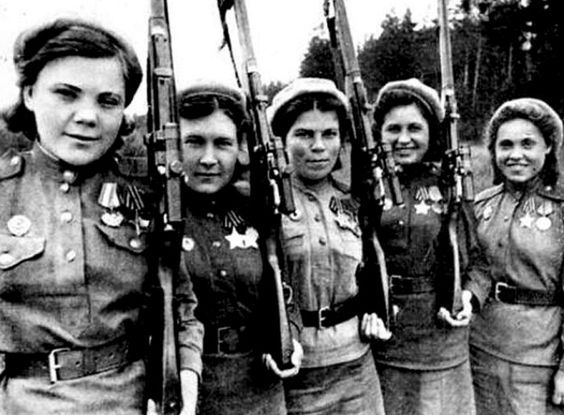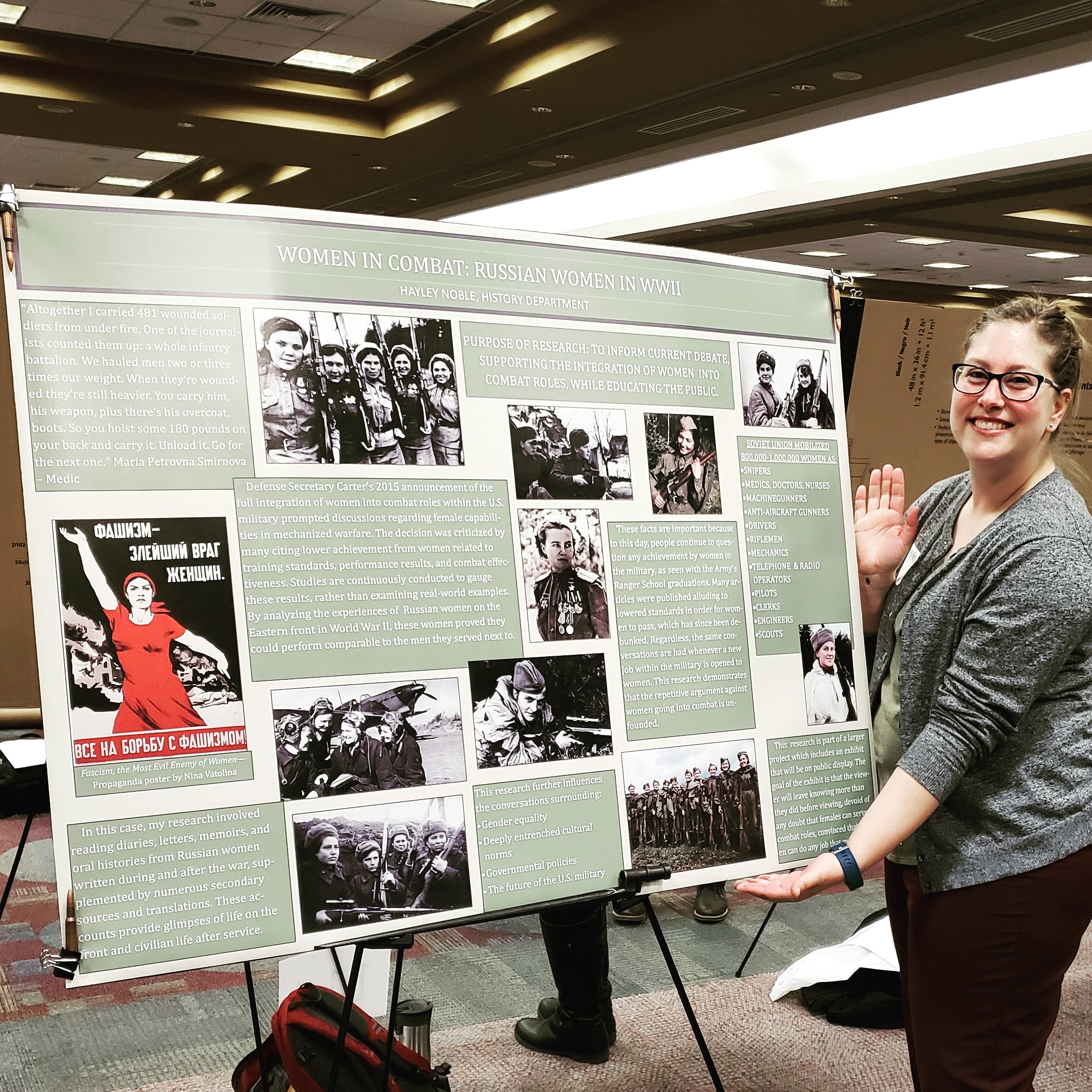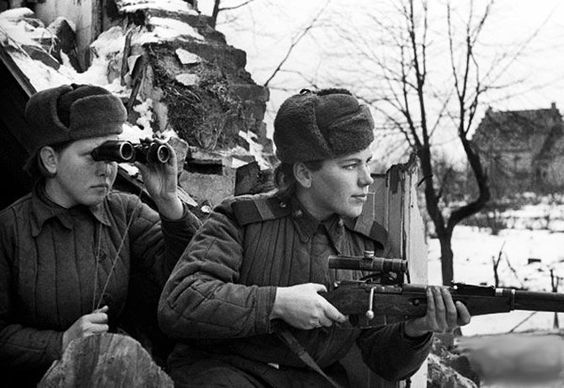
Hayley Noble, a graduate student in the history department, is working to complete her master of applied historical research degree. Her studies focus on military history, specifically World War II, and the relationship between violence and gender. She began studying the roles of Soviet women in combat during World War II.
Noble has curated an exhibition, “Women in Combat: The Soviet Example,” which is at Albertsons Library between March 23 and May 20. Noble will give a talk about her work and the exhibition at noon on March 29 in the Frank Church room on the library’s second floor.
The Soviet Union, said Noble, mobilized approximately a million women into the war effort, on the front, in the rear, in home defense, not including factory workers and partisans. Women in the Red Army served noncombatant roles such as drivers, clerks, medical personnel and in communications. Lesser-known, said Noble, is that women also fought alongside men in the trenches. They trained as members of air crews to be pilots, navigators and mechanics, and with ground forces as tank drivers and mechanics, medics, machine gunners, snipers, sappers and communications operators.

“When women are held to the same standards and receive the same training as men, they perform as well as their male counterparts, holding the same motivations: wanting to defend their country from an invading force. I found all of this out through my research, looking at oral history accounts, memoirs, translated scholarly works from researchers in Soviet archives and many books surrounding the progression of gender in the military, spanning WWII to the present,” said Noble.
After the war was over, female veterans, like those in America, returned to more traditional roles in the home. Society considered their combat service shameful and inappropriate, said Noble.
“Not until the 1980s was there interest in hearing their stories. Even now, Americans are often unaware of these women, and they are left out of the World War II narrative,” she said.
Her talk, and exhibition will help illuminate this hidden history.
